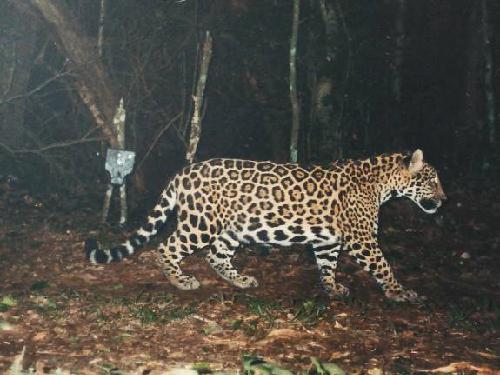Agustin Paviolo
Other projects
29 Dec 2007
Jaguar (Panthera onca) Densities in the Atlantic Forest of Argentina: Its Relationship with Prey Availability, Hunting Pressure and the Presence of Pumas (Puma concolor) II
15 Mar 2010
A Research Project to Help Preserve the Endangered Jaguar Population of the Green Corridor of Misiones, Argentina
This project will assess the ecology and population size of jaguars needed to conduct a Population Viability Analysis and for guiding conservation activities. By understanding which are the limiting factors that affect the carrying capacity of this jaguar population we can improve its chances of long term survival.

The Atlantic Forest of Misiones in Argentina and neighbor areas of Brazil and Paraguay, contains the Green Corridor, the largest remnant of Upper Parana Atlantic Forest and the southern-most jaguar (Panthera onca) population in the World. It is the only jaguar population of the ecoregion whose was categorized by experts with possibilities of long term survival. However, jaguars are threatened by several factors as hunting of its preys, conflict with cattle ranchers and human encroachment of its habitat. Actually little is known of its population status and trends. The survival of this jaguar population is important for the conservation of the Upper Paraná Atlantic Forest Ecoregion. Jaguars play an important roll in the ecosystem for their top-down regulation effect, limiting herbivore populations and playing an important function in the maintenance of healthy ecosystems.
The jaguar is also an umbrella species and thus, by maintaining a viable population of this species, we will be protecting a large part of the biodiversity and its habitat. The jaguar is a flagship species too of great cultural value for the native people and for the new inhabitants of the region, resulting in a powerful tool in establishing habitat conservation strategies. My research activities are aimed at estimating jaguar densities in four different areas in Misiones using a methodology that utilize camera-traps and capture-mark-recapture models to estimate population size. I will estimate poaching pressure and prey and puma (Puma concolor) densities in this to identified different factors that are regulating this jaguar population. I have already completed two (of a total of four) jaguar, puma and prey surveys (Urugua-í Provincial Park and Iguazú National Park) and the third one is under way (Yabotí Biosfera Reserve).